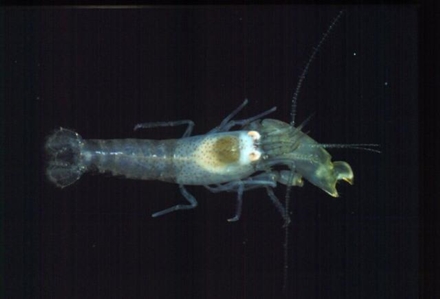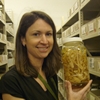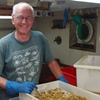General Description
Rostrum clearly longer and slightly narrower than orbital processes, not depressed, without ridge running on to carapace; very shallow grooves between. Orbitorostral process present. Large claw (chela) swollen, upper margin of sixth segment (propodus) ending in variable projection. Small claw (chela) fingers simple, each with simple apex. Fourth segment (merus) of third leg (pereopod 3) without spiniform setae on lower margin, no distal tooth; last segment (dactylus) with 2 distal claws, upper one longer than lower. Tailfan (telson) with stout dorsolateral spiniform setae. Maxilliped 3 with circlet of short apical spiniform setae and setae on inner face of terminal article. Up to 2.5 cm long.
Biology
The species is often found in male-female pairs and sometimes in larger numbers inside sponges. The fingers at the end of the larger claw are used to make a loud snapping noise to stun prey. Some species of Synalpheus are reported to have a simple sort of social behaviour and have been likened in this way to bees and ants.
Habitat
In algae, coral and sponges, to 150 m depth.
Reefs
Soft substrates
Coastal shores
Distribution guide
Circum-Australian and Indo-Pacific Oceans.
Species Group
Prawns, shrimps, lobsters › Shrimps
Depth
Shore (0-1 m)
Shallow (1-30 m)
Deep ( > 30 m)
Water Column
Max Size
25 mm
Diet
Organic matter
Commercial Species
No
Global Dispersal
Recorded in Australia
Species Code
MoV 1673
Conservation Status
- DSE Advisory List : Not listed
- EPBC Act 1999 : Not listed
- IUCN Red List : Not listed










